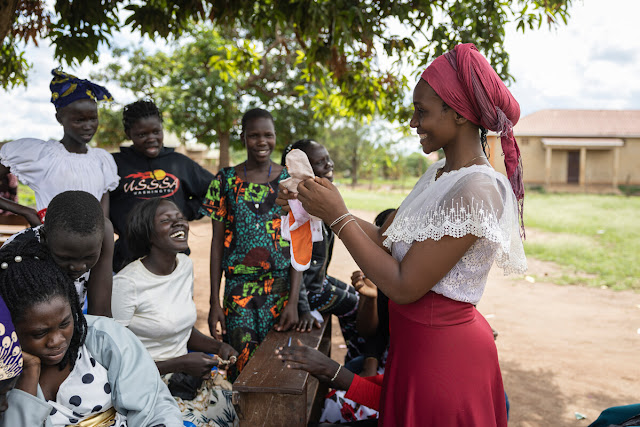It's something that needs talking about, it makes some people uncomfortable, but many of us have the luxury of being able to access sanitary products and others don't. There's a huge need for safe hygienic menstrual products and a pressing concern about making products sustainable. 28th May was World Menstrual Hygiene Day and I'm happy to be sharing the great work that ActionAid UK are doing to end period poverty.
"We focus on women and girls because the denial of their rights is a grave injustice and one of the underlying causes of poverty worldwide. By working directly with communities, women’s movements, groups and networks, and other allies, we aim to tackle the structural causes and consequences of poverty and injustice.
Through our ‘Share a Better Period’ campaign, running throughout the summer of 2022, ActionAid is working to end period poverty, because around the world thousands of women and girls live without access to the safe sanitary products they need, putting their health and safety at risk. You can read all about the campaign, the issues, and what we are doing to help on our Share a better period web page."
Having read more about their work, I realise how difficult periods can be for women and girls with the hardships they experience and the many myths around periods.
There is also a real issue with the environmental impact of disposable menstrual products.
"Mass-produced menstrual products are disposable and contain plastic and other non-biodegradable materials that are harmful to the environment.
Pads are made of 90% plastic while tampons have at least 6% plastic. This large-scale plastic production releases vast amounts of greenhouse gases, which cause air pollution and global warming.
In addition, the improper disposal of menstrual products (like wrapping them in plastic bags) fills up landfills and takes years to biodegrade.
Some menstrual products are also flushed down the toilet, which could mean that disposable pads and tampons can end up in our seas and washed up on our beaches. This has a detrimental effect on humans, the wildlife and our habitats."
It's important for me and my family to try to live as sustainably as possible. I use a menstrual cup partly for that reason. There are times when a pad is a good back up or alternative, so I used the ActionAid template and instructions to make a reusable pad. And if you're not sure that sounds any good, read this review and test of the pads.
I have to say they are super easy to make, I was rushing a bit but even with a bit of hand stitching this took less than 20 minutes.
I did decide not to use a button, buttonholes aren't my favourite thing and since I have snaps I might as well use them. I made a little reel of the process over on my instagram if you want to check it out!
Have a go at making your own! You can also find out about ways you can help in your community to end period poverty and visit ActionAid UK to learn about the share a better period campaign and how this project makes a difference.




No comments
Post a Comment